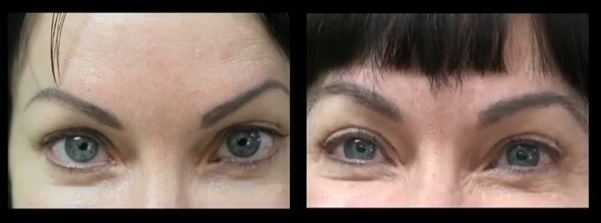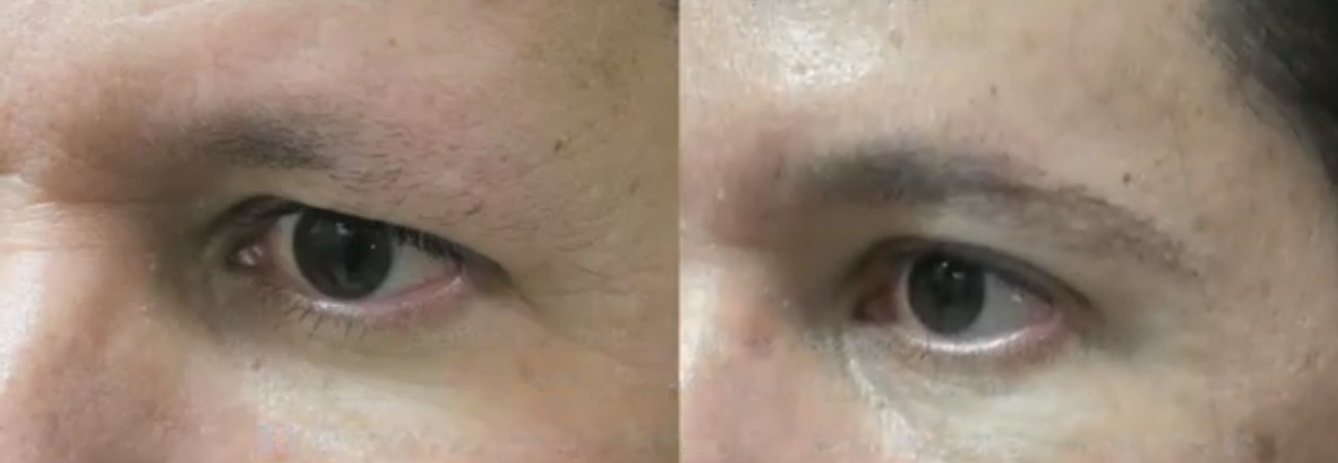But now, this procedure has just gotten even better in terms of producing softer and more natural looking definition.
Eyebrow transplant surgery publications
Two highly respected medical journals recently published Dr Umar’s manuscripts on his methods for creating more natural looking eyebrows. Read more about what was published in Derm Surgery Journal and the JAAD here.
Dr. Umar is a globally recognized hair transplant expert who specializes in the graft extraction of non-head hair. His techniques can not only be applied to increase coverage and density for hair loss cases, but also to create fuller and more attractive, natural looking eyebrows. In both cases, the ability to choose the ideal hair thickness is essential for recreating realistic looking detail.
As Dr. Umar states, “When you do any cosmetic procedure, you don’t do it so that people can tell you’ve had it done.”
Eyebrow Transplant Surgery Publications of Dr U in JAAD and Derm Surgery Journal : More Natural Looking Eyebrow Transplant Results With Nape & Leg Hair
So far, conventional eyebrow transplantation has been using hair grafts taken from the mid-occipital area of the scalp, where hair tends to grow the thickest. By comparison, real brow hair is much finer. Therefore, using head hair can a create harsh, overpowering result for the face.
Thinner and more ideally suited grafts for the eyebrows are available on body areas such as the nape, periauricular areas (around the ears) and the legs. However, conventional tools for extracting these grafts tend to leave noticeable scarring. And furthermore, the types of punches that may be used are not able to properly accommodate the sharp angle of these types of hairs. Therefore, they carry a huge risk of damaging such follicles during surgery.
Dr. Umar invented a revolutionary form of rotary punch instrumentation known as the UGraft Revolution (™). He worked with a team of engineers to design a device that can safely extract atypical hair grafts from the nape and even the legs. This tool makes it possible to acquire fine hair grafts necessary to create softer and more subtle definition around each eyebrow. Learn more about how UGraft works here.
Studies on the Use of Nape Hair & Leg Hair in Actual Patients

In December 2014, Derm Surgery published a manuscript by Dr Umar, entitled Eyebrow Transplants- The Use of Nape and Periauricular Hair in Six Patients. This observational study was performed on six patients who underwent eyebrow transplantation using grafts extracted from the nape and periauricular region. One of these was a 54 year old Caucasian woman who had over plucked her eyebrows and relied on the use of brow tattoos. She later regretted them and felt that they looked “fake.” So she chose surgery to achieve a more natural look. Nape hair was used to cover the tattoos. In all patient cases, the thinner hairs from the NPA regions (nape and periauricular) managed to thrive, giving patients new chances at achieving the brow shape and thickness they were not able to grow themselves.
Earlier, In October 2014, JAAD published yet another of Dr Umar’s works the report, “Eyebrow Transplantation: Alternative Body Sites As Donor Sources.” This paper describes the experience and results of a 46 year old Hispanic male who genetically endowed with sparse eyebrows. When interviewed on video, he described how self conscious this made him feel. He wanted improved definition without obvious looking results. Leg hair helped him achieve his vision. Not only did these grafts survive and thrive, but they allowed this patient and the others mentioned in the study to trim their results much less frequently than nape hair (3-4 weeks as opposed to every 7-10 days). Leg hair maintains a short length that is rather similar to native eyebrow hair. According to Dr Umar, “apart from the legs, other similarly suited body hairs such as forearm hairs can be used as well.
The look of full, thick beautifully shaped brows adds depth and distinctive detail to the face. And while this aesthetic is appealing to both men and women, many people are not born with the capability to simply grow and shape their brow hairs to match this standard. Now, thanks to the work modern medicine, it is now possible to surgically achieve this possibility, almost as if the individual was actually born with the genes for naturally full and perfect looking eyebrows. According to Dr. Umar, surgery is currently the best way to attain this standard until medicine has reached the point where hair cloning has become refined enough to create the right graft thickness in lab settings.


Further reading:
Learn more about eyebrow transplant surgery here.
